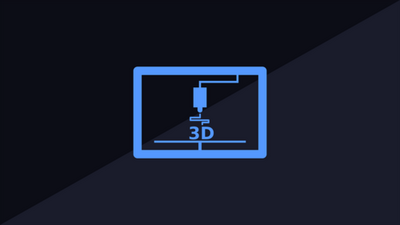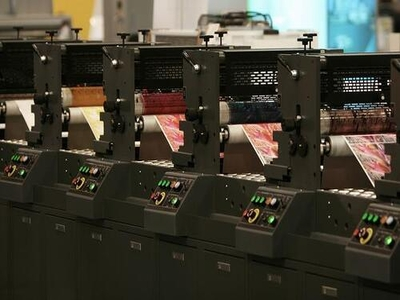What is a raft in 3D printing? This is a question many people have asked, but few people can answer.
The quick answer is that a raft is the first layer of material that’s printed in a 3D printing job. It’s usually a thin layer of material that’s used to create a base for the rest of the object.
Without a raft, it would be very difficult to print large objects as they wouldn’t stick to the build plate.
In this blog post, we will discuss, in-depth, what rafts are and how they’re used in 3D printing!
What is a Raft in 3D Printing?
In the context of 3D printing, a raft is a thin, dissolvable support structure that helps to anchor intricate parts and complex designs as they’re being printed.
This support system is typically made of a substance like PVA – water-soluble polyvinyl alcohol commonly used in glues – and other adhesives.
As a 3D model is built layer by layer, the raft acts as an anchor for each new section until it can stand on its own.
When the printing process is complete, the raft simply dissolves away, leaving behind a fully formed model.
Rafts have countless applications in fields ranging from architecture to engineering and beyond.
But whether you’re working on designing a new building or developing high-tech medical equipment, knowing how to use rafts in 3D printing can help to ensure success.
Read More: What Causes Layer Shift in 3D Printing? Not sure why your layers aren’t lining up? Here are possible causes and solutions.
What are the Benefits of Using a Raft?

Overall Quality
When it comes to 3D printing, one of the most important factors is the raft.
Rafts are essentially a foundation that helps to anchor intricate parts and complex designs as they’re being printed.
Without a raft, these parts would simply float away or fall apart.
In addition, rafts help to improve the overall quality of the print by providing support for delicate features.
Rafts not only make it easier to remove prints from the build plate but they can also be reused multiple times.
Read More: How to Design Parts for 3D Printing. Discover what you need to know about choosing the right software, creating models, and preparing files for printing!
Increases Stability
One of the main benefits of a raft is that it can act as an anchor for each new section of a structure until it can stand on its own.
By holding the lower sections securely in place, the raft provides a stable base for construction to build upon.
Ultimately, by serving as an anchor for each new section, a well-designed and properly positioned raft can be an invaluable tool in ensuring proper construction and long-term stability.
Ensure Success
When it comes to 3D printing, one of the most important aspects is ensuring success.
Whether we’re talking about engineers and architects using 3D printers to create prototypes or hobbyists using them to manufacture DIY parts and accessories, they all rely on successful results.
One element that can play a crucial role in overall success is a raft.
Rafts act as supports when printing, helping to distribute heat and prevent warping or cracks in prints.
Additionally, rafts also reduce the likelihood of losing small parts and allow extruded materials to cool at a consistent rate.
So while they take more time and resources to use, rafts are a valuable tool in the world of 3D printing, making your designs more accurate and less likely to fail.
With its range of benefits, it’s clear that the raft has truly earned its place as an essential part of successful 3D printing.
Read More: Best Way to Remove Raft From 3D Print. We discuss how to remove a raft from your print without damaging the model (and include a helpful video!)
How Do You Print With a Raft?

Printing with a raft is an important step toward producing high-quality prints as they serve as a foundation for the rest of your print.
This foundation will help ensure that your design remains stable and flat throughout the printing process.
Most printers will include software options for adding or removing a raft as needed, allowing you to customize your prints based on the specific details of your design.
But when it comes to printing with a raft, there are several key steps that you should keep in mind:
- First, make sure that you have angled the raft appropriately in order to leave space around the edges of your print.
- Next, choose an appropriate layer height, depending on the level of detail in your design and the desired level of quality for your final printout.
- Finally, configure any necessary support structures and hit the “print” button to get started!
With some careful planning and attention to detail, you will be able to successfully print using a raft on just about any 3D printing system.
Read More: What is the Best Layer Height in 3D Printing? Which layer height will make your prints strong and reliable? Here’s what to know about layer heights!
What are the different types of rafts?

3D printers have come a long way since they were first invented in the 1980s.
Today, there are a variety of different types of 3D printers available on the market, each with its own unique features and benefits.
One popular type of 3D printer is the raft printer.
- Raft printers are designed to print objects with a large base area, such as furniture. The raft helps to support the object as it’s being printed, making it less likely to warp or collapse.
Raft printers typically have a larger build area than other types of 3D printers, making them ideal for printing large objects.
Another popular type of 3D printer is the extrusion printer.
- Extrusion printers use a heated nozzle to melt and extrude plastic filament, which is then deposited onto a build platform to create an object.
Extrusion printers are typically faster and more precise than other types of 3D printers, making them ideal for printing small objects with intricate details.
Finally, there are vat polymerization printers.
- Vat polymerization printers use light to cure liquid resin into solid plastic and are often used to print objects with fine details and smooth surfaces.
However, they can be slower and more expensive than other types of 3D printers
Read More: How Strong is 3D Printer Resin? Is resin right for your heavy-duty 3D project? Here’s what to know!
The Bottom Line
As you can see, there are a variety of different types of rafts available, each with its own unique benefits.
When choosing a raft for your next project, it’s important to consider the specific needs of your design in order to choose the best option for your application.
With so many different types of rafts on the market, there’s sure to be one that’s perfect for your next project! Thanks for reading and happy printing!
Read More